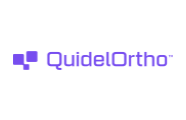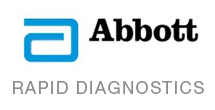Respiratory illnesses are typically diagnosed using specimens collected from the upper or lower respiratory tract. Having the right tools to successfully collect, transport, and store these samples can enhance your procedures and improve the reliability of your test results.
The Fisher Healthcare brand offers a wide selection of specimen collection products, including collection kits, swabs, and transport media varieties. Explore multiple options for bacteriology, molecular, and viral applications to support the specific needs of your clinical laboratory.
Specimen Collection Guidelines
The sensitivity and specificity of any test using respiratory specimens can vary by the type of testing method and specific test used, the time from illness onset to specimen collection, the quality of the specimen collected and the sample collection products used, the respiratory source of the specimen, handling and processing of the specimen, and the time from specimen collection to testing.
Safe Specimen Collection and Handling
When collecting specimens or working within six feet of patients suspected to be infected with SARS-CoV-2, maintain proper infection control precautions and use the recommended personal protective equipment (PPE):
- N95 mask or higher-level respirator
- Facemask (if a respirator is not available)
- Goggles or other types of eye protection
- Medical exam grade gloves
- Medical protection gown
General Respiratory Specimen Collection Guidelines
- Only trained healthcare personnel should collect nasopharyngeal (NP) and oropharyngeal (OP) specimens
- Use synthetic fiber swabs with thin plastic or wire shafts designed for sampling the nasopharyngeal mucosa; do not use calcium alginate swabs, swabs with wooden shafts, or other types of sample collection products
- If both NP and OP swabs are collected, combine them to maximize test effectiveness and reduce the need for additional testing resources
Upper Respiratory Tract Specimen Collection
Collecting an NP specimen:
- With the patient’s head tilted back 70 degrees, gently and slowly insert the swab through the nostril and parallel to the palate (not upwards); continue until you meet resistance or the distance is about the same as from the ear to the nostril (the nasopharynx)
- Gently rub and roll the swab and leave it in place momentarily to absorb any secretions; slowly rotate the swab while removing it
NOTE: If it is difficult to obtain a specimen from one nostril, sample the other nostril using use the same swab - Place swab, tip first, into a transport tube or media
Collecting an OP specimen:
- Insert swab into the posterior pharynx and tonsillar areas and rub it over both tonsillar pillars and the posterior oropharynx (avoid touching the tongue, teeth, and gums)
- Place swab, tip first, into a transport tube or media
Collecting a nasal mid-turbinate (NMT) specimen:
- Tilt the patient’s head back 70 degrees and gently rotate a tapered swab while inserting it less than one inch (about 2 cm) into the nostril and parallel to the palate (not upwards) until resistance is met
- Rotate the swab several times against the nasal wall and use the same swab to repeat the process in other nostril
- Place swab, tip first, into a transport tube or media
Collecting an anterior nasal specimen:
- Insert the entire tip of the swab into the nostril and rotate it in a circular path against the nasal wall at least four times (approximately 15 seconds)
NOTE: Collect any nasal drainage present - With the same swab, repeat the process in the other nostril
- Place swab, tip first, into a transport tube or media
Collecting a nasal or nasopharyngeal wash/aspirate
- Attach a catheter to the suction apparatus
- Tilt patient’s head back 70 degrees and instill 1 to 1.5 mL of non-bacteriostatic saline into one nostril
- Insert the tubing into the nostril (parallel to the palate, not upwards) to a depth equal to the distance from nostril and the ear
- Begin gentle suction and remove the catheter while rotating it gently
- Place the specimen in a sterile viral transport media tube
Some specimen collection products and diagnostic testing kits include swabs specifically designated for collecting specimens for that particular test.










